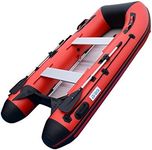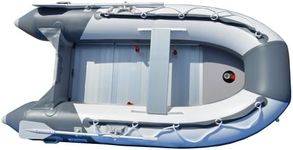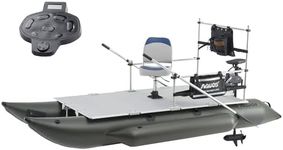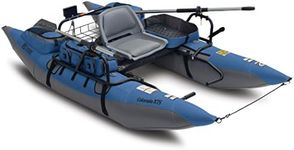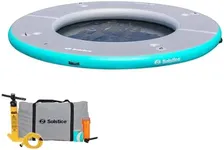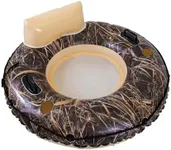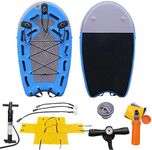Buying Guide for the Best Inflatable Pontoon Boats
Choosing the right inflatable pontoon boat can greatly enhance your water adventures, whether you're into fishing, leisurely cruising, or exploring new waters. The key to finding the best fit for you is understanding the various specifications and how they align with your needs. Here are the main specs to consider when selecting an inflatable pontoon boat.Size and CapacitySize and capacity refer to the dimensions of the boat and the maximum weight it can hold. This is important because it determines how many people and how much gear you can bring along. Smaller boats (under 8 feet) are ideal for solo adventurers or those with limited storage space. Medium-sized boats (8-10 feet) can accommodate two people and some gear, making them versatile for various activities. Larger boats (over 10 feet) are suitable for groups or those who need to carry a lot of equipment. Choose a size that matches your typical usage and the number of passengers you plan to have.
Material and DurabilityThe material of the inflatable pontoon boat affects its durability and performance. Common materials include PVC and Hypalon. PVC is lightweight, affordable, and suitable for casual use in calm waters. Hypalon is more durable, resistant to UV rays and chemicals, and ideal for frequent use or rougher conditions. If you plan to use your boat often or in challenging environments, opt for a Hypalon boat. For occasional use in gentle waters, a PVC boat should suffice.
Weight and PortabilityWeight and portability are crucial if you need to transport your boat frequently. Lighter boats are easier to carry and set up, making them perfect for solo users or those who need to hike to their launch point. Heavier boats may offer more stability and durability but can be cumbersome to move. Consider how you will transport the boat and whether you need a model that is easy to carry and inflate on your own.
Inflation and Assembly TimeInflation and assembly time refer to how long it takes to get the boat ready for use. This is important for convenience and ease of use. Boats with quick inflation systems and simple assembly processes are ideal for those who want to get on the water quickly without hassle. If you value convenience and have limited time, look for boats with efficient inflation mechanisms and straightforward assembly instructions.
Stability and PerformanceStability and performance are determined by the design and construction of the boat. This affects how the boat handles in the water and its suitability for different activities. Boats with wider pontoons and a lower center of gravity offer better stability, making them ideal for fishing or standing activities. Sleeker designs with pointed bows can cut through water more efficiently, providing better performance for cruising or covering longer distances. Choose a boat that matches your primary activity and the type of water you will be navigating.
Accessories and FeaturesAccessories and features can enhance your boating experience. These may include rod holders, storage compartments, motor mounts, and comfortable seating. Consider what additional features are important for your activities. For example, anglers might prioritize rod holders and storage for tackle, while those looking for comfort might prefer padded seats and ample legroom. Identify the features that will make your time on the water more enjoyable and look for boats that offer those options.
